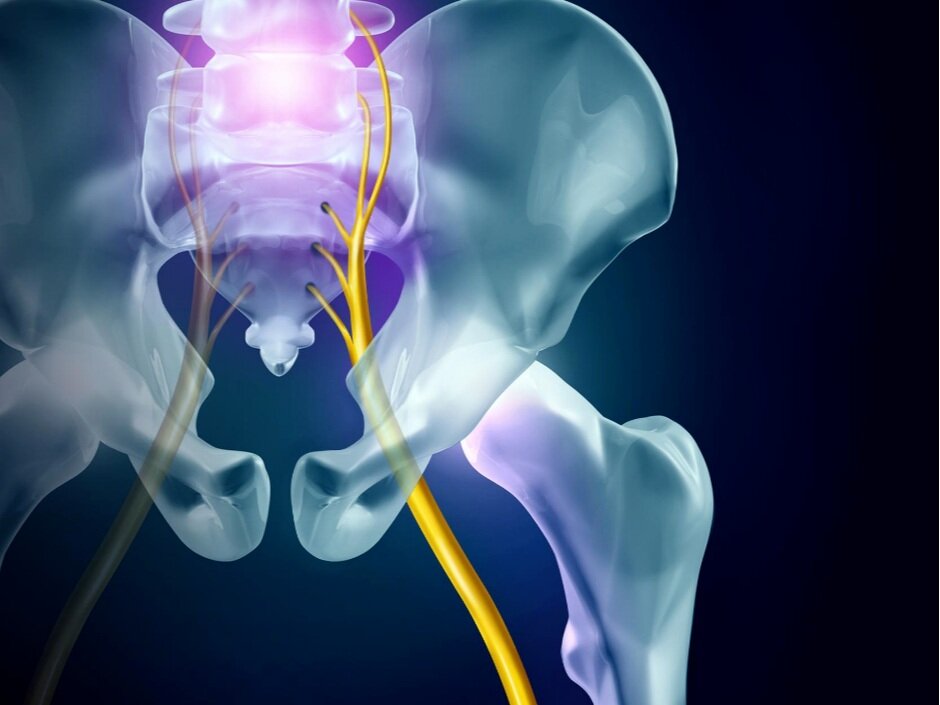Physical Therapy for Sciatica Pain Relief
Sciatica pain is nerve pain that radiates from the low back through the length of the leg due to compression of the sciatic nerve. Physical therapy is the first line of treatment for sciatica pain management, relief, and treatment. Physical therapists can provide symptom relief for sciatica pain, promote healing of the underlying cause, improve patients’ physical function, and help prevent recurrences and flareups of sciatica pain.
What is Sciatica Pain?
Sciatica pain is nerve pain that originates in the low back and radiates through the buttock down the length of the leg. It is caused by irritation or compression of the sciatic nerve. The sciatic nerve is the largest single nerve in the body, branching and extending down the right and left legs. Sciatica pain is usually a symptom of an underlying condition and tends to develop over time. Sciatica pain is most common in those ages 30 to 50.
Patients with sciatica pain:
Commonly have pain in only one leg
Feel a constant burning sensation or shooting pain down the low back through the leg
Can experience numbness in the back of the leg or tingling and weakness in the leg
May feel worse based on posture (Sitting, standing, bending, or lying down affect each patient’s pain differently.)
Physical Therapy for Sciatica Pain
Sciatica pain can be debilitating. While patients may initially rest when experiencing sciatica pain, exercise is a better option for relieving pain over the long-term. Lack of activity can decondition the back muscles and spine, making them less able to support the back and contribute to continued back strain and pain. Exercise is critical for the health of spinal discs as movement allows discs to exchange nutrients and fluid that keep them healthy and prevent herniation or degeneration that can place pressure on the sciatic nerve.
Physical therapy is the first line of treatment for treating, relieving, and preventing sciatica symptoms. Sciatica pain is treated by physical therapists with a controlled, progressive exercise program targeted at the underlying cause of the pain; exercise conditions the back to prevent future pain. This is done in combination with passive treatments used to manage pain and inflammation.
When treating sciatica pain, the physical therapist works to strengthen the patient’s spine and muscles of the lower back, abdomen, buttocks, and hip; increase the patient’s core strength; restore pain-free functional movement; and improve lower body mobility.
Physical therapy treatment for sciatica pain includes:
Aerobic conditioning exercise program
Back stretching exercises
Strengthening exercises using resistance bands and weight training
Functional retraining for proper technique when lifting, carrying, bending, or squatting
Manual therapy to mobilize the joints and provide pain relief
Dry needling to release hyper-irritable muscle tissue causing pain
Gait training and core strengthening exercises
Aquatic therapy, using warm water pool therapy for pain relief and greater ease exercising
Passive treatments: hot and cold modalities, ultrasound, and TENs unit
Exercises for Sciatica Pain Relief
Mangiarelli Rehabilitation physical therapist, Mike, demonstrates three exercises to relieve acute sciatica pain.
